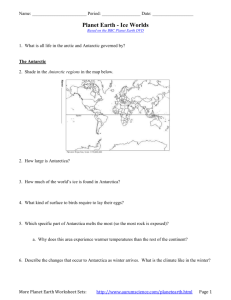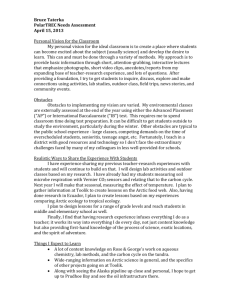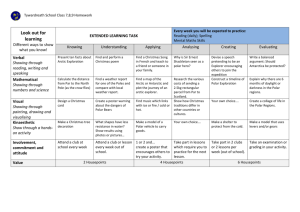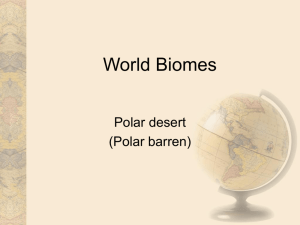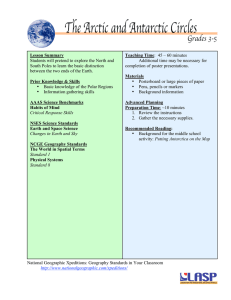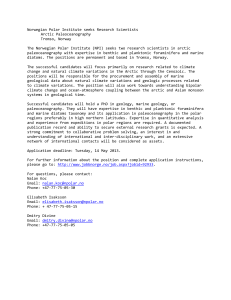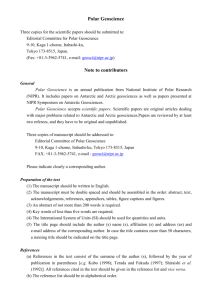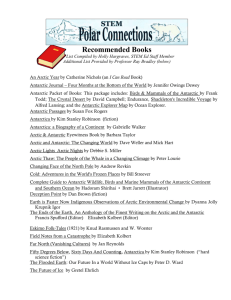Life Cycles Polar Lands
advertisement
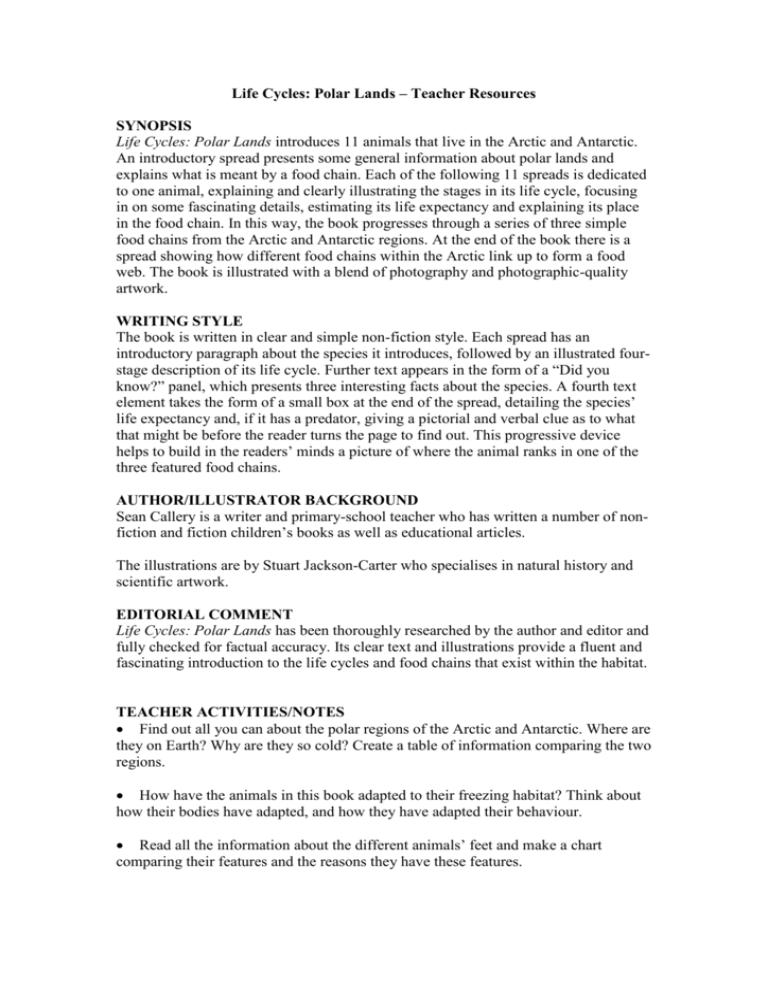
Life Cycles: Polar Lands – Teacher Resources SYNOPSIS Life Cycles: Polar Lands introduces 11 animals that live in the Arctic and Antarctic. An introductory spread presents some general information about polar lands and explains what is meant by a food chain. Each of the following 11 spreads is dedicated to one animal, explaining and clearly illustrating the stages in its life cycle, focusing in on some fascinating details, estimating its life expectancy and explaining its place in the food chain. In this way, the book progresses through a series of three simple food chains from the Arctic and Antarctic regions. At the end of the book there is a spread showing how different food chains within the Arctic link up to form a food web. The book is illustrated with a blend of photography and photographic-quality artwork. WRITING STYLE The book is written in clear and simple non-fiction style. Each spread has an introductory paragraph about the species it introduces, followed by an illustrated fourstage description of its life cycle. Further text appears in the form of a “Did you know?” panel, which presents three interesting facts about the species. A fourth text element takes the form of a small box at the end of the spread, detailing the species’ life expectancy and, if it has a predator, giving a pictorial and verbal clue as to what that might be before the reader turns the page to find out. This progressive device helps to build in the readers’ minds a picture of where the animal ranks in one of the three featured food chains. AUTHOR/ILLUSTRATOR BACKGROUND Sean Callery is a writer and primary-school teacher who has written a number of nonfiction and fiction children’s books as well as educational articles. The illustrations are by Stuart Jackson-Carter who specialises in natural history and scientific artwork. EDITORIAL COMMENT Life Cycles: Polar Lands has been thoroughly researched by the author and editor and fully checked for factual accuracy. Its clear text and illustrations provide a fluent and fascinating introduction to the life cycles and food chains that exist within the habitat. TEACHER ACTIVITIES/NOTES Find out all you can about the polar regions of the Arctic and Antarctic. Where are they on Earth? Why are they so cold? Create a table of information comparing the two regions. How have the animals in this book adapted to their freezing habitat? Think about how their bodies have adapted, and how they have adapted their behaviour. Read all the information about the different animals’ feet and make a chart comparing their features and the reasons they have these features. Which of the five senses (sight, hearing, taste, smell and touch) do you think is the most important to each animal in this book? Why? Find the ways in which the swimming animals in this book move in the water. How are they different? What homes do animals living in polar lands have? Make a poster showing four different kinds of home. Write a poem describing a hunt by one of the animals in the book.

